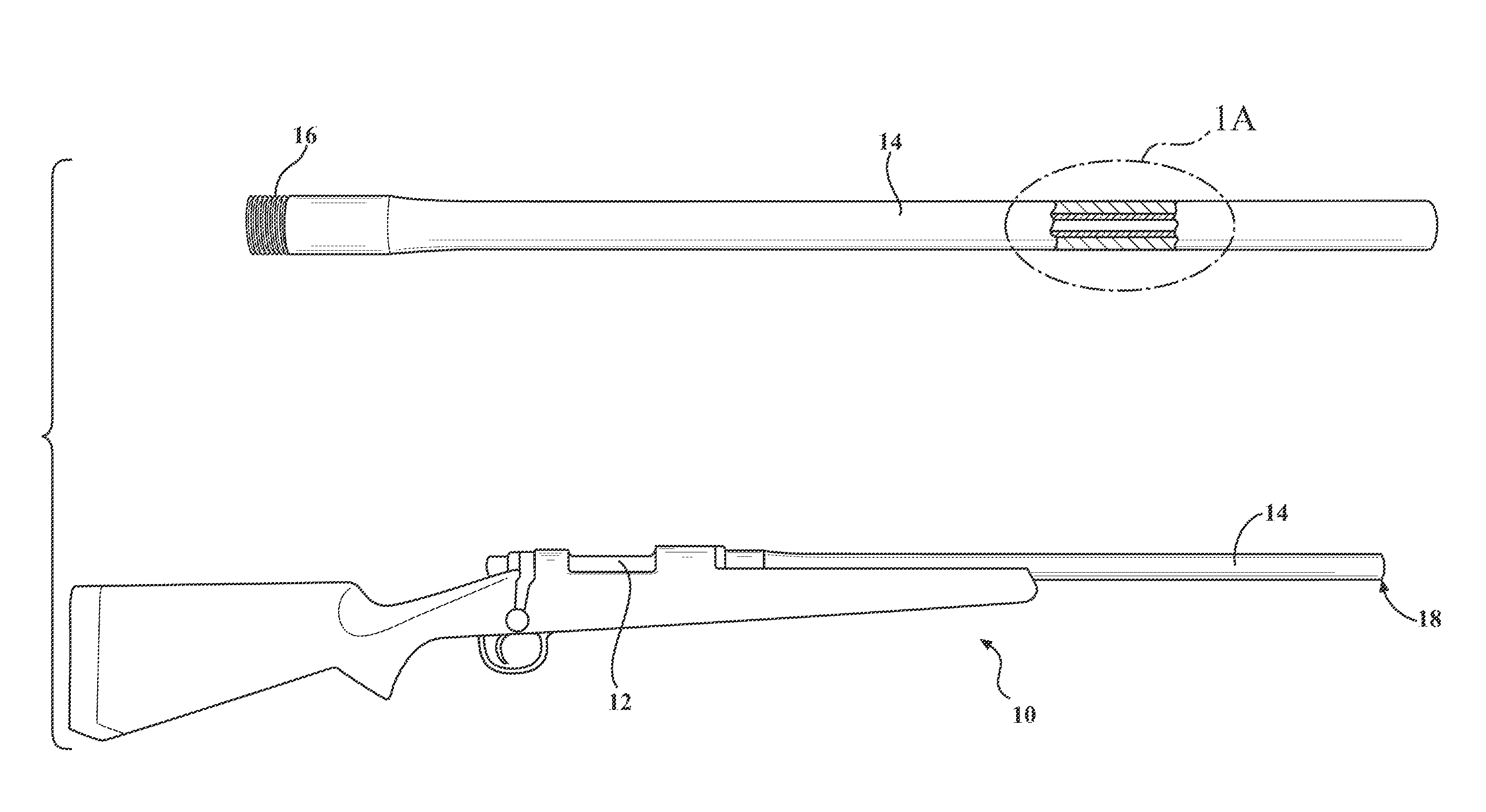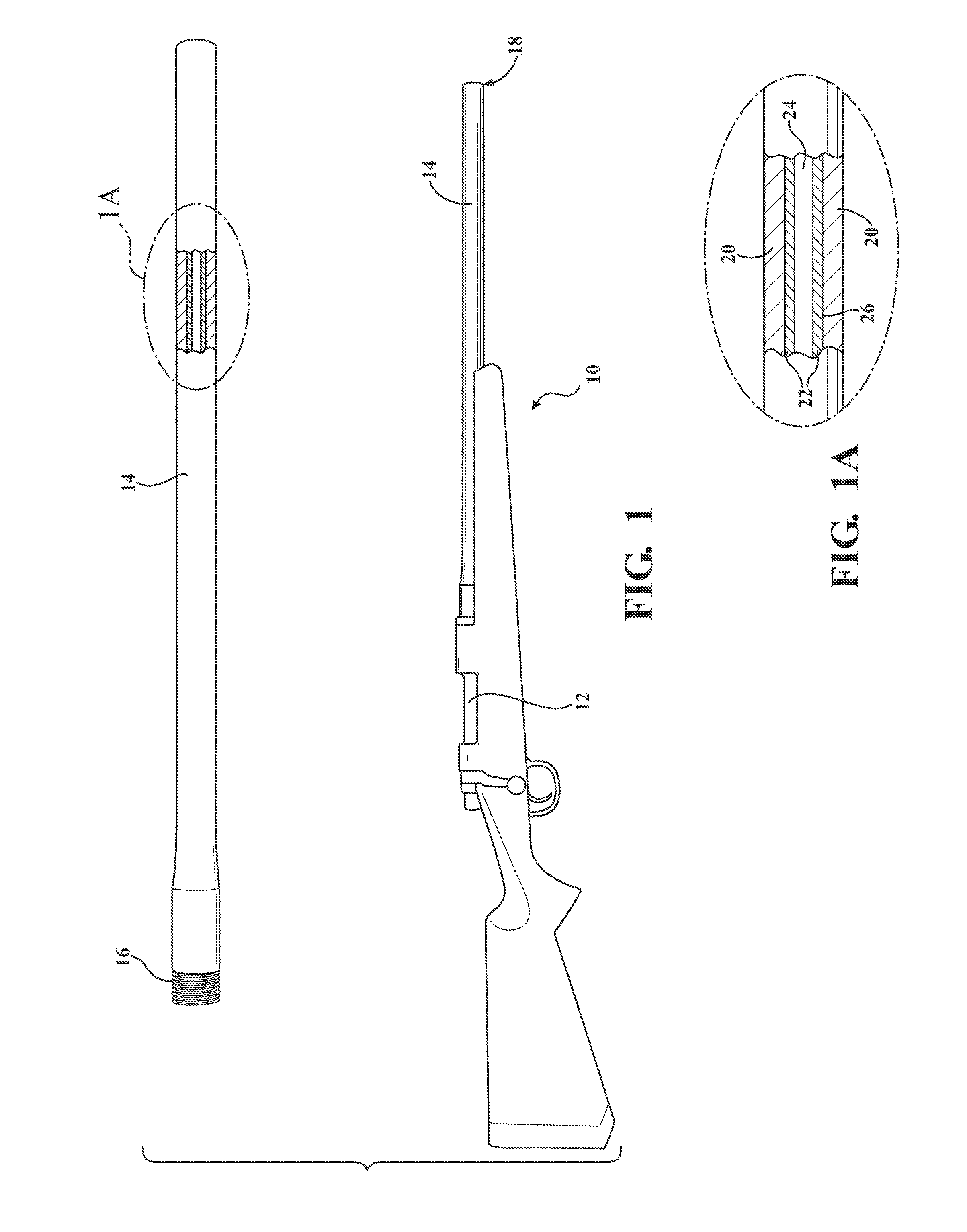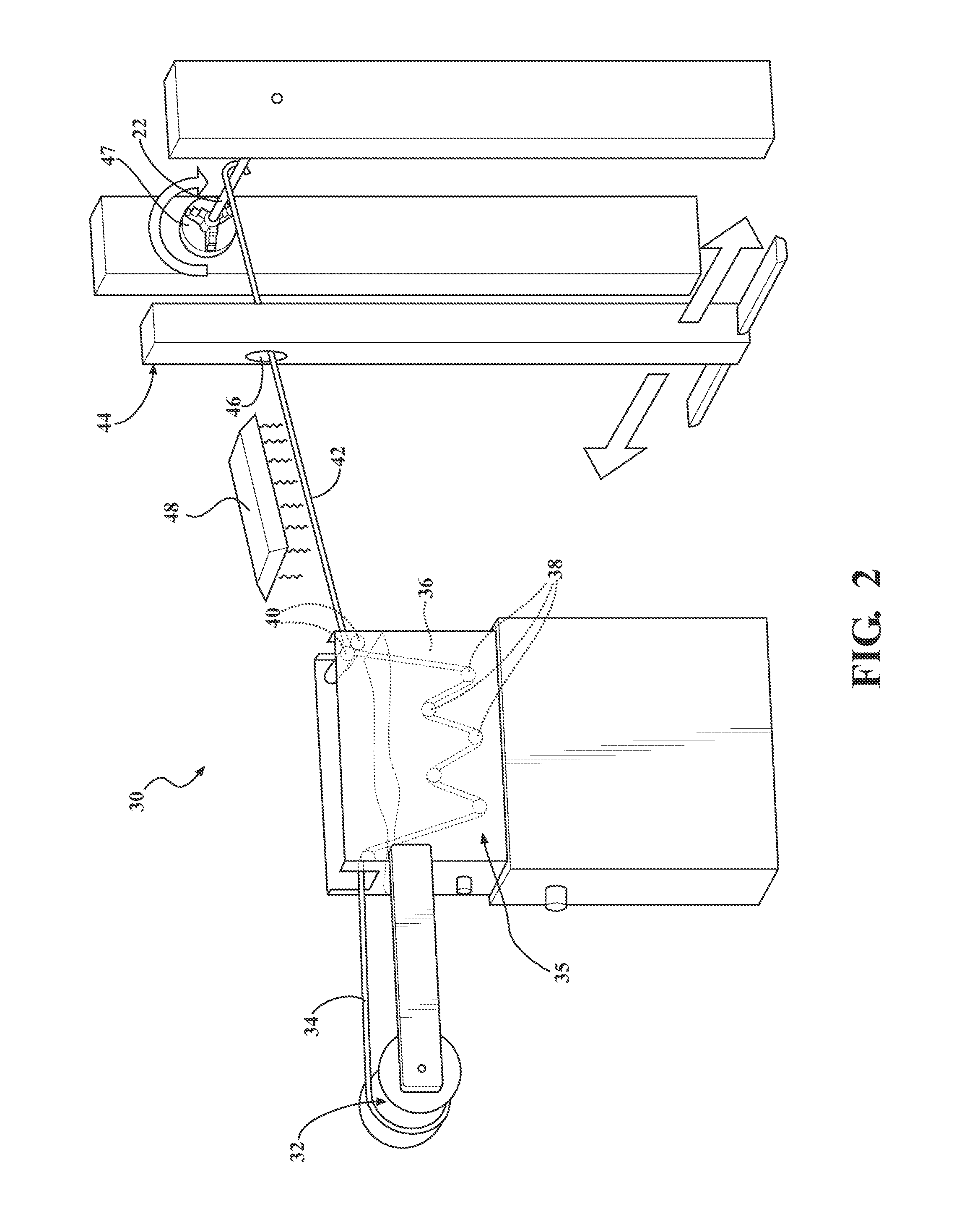High temperature composite projectile barrel
- Summary
- Abstract
- Description
- Claims
- Application Information
AI Technical Summary
Benefits of technology
Problems solved by technology
Method used
Image
Examples
Embodiment Construction
[0023]Referring to the figures, wherein like numerals indicate like or corresponding parts throughout the several views, FIG. 1 shows a bolt action rifle 10 fitted with a receiver 12, stock, trigger, barrel 14, and other familiar features. In the embodiment shown, barrel 14 securely engages with receiver 12 by means of threads 16. In operation, a cartridge of ammunition is inserted into the receiver. The cartridge has a base portion containing a gunpowder charge and dischargeable projectile, i.e., a bullet. When a shooter pulls the trigger, a firing pin strikes the base of the cartridge, igniting the gunpowder charge and causing the bullet to discharge through axial bore 24 and out of the muzzle 18.
[0024]As shown in FIG. 1A, barrel 14 is comprised of an inner liner 22 and an outer shell 20. In one embodiment, inner liner 22 is made of a metal, such as a steel alloy. A metal inner liner, such as stainless steel, facilitates fabrication of rifling lands and grooves along axial bore 24...
PUM
| Property | Measurement | Unit |
|---|---|---|
| Temperature | aaaaa | aaaaa |
| Length | aaaaa | aaaaa |
| Length | aaaaa | aaaaa |
Abstract
Description
Claims
Application Information
 Login to View More
Login to View More - R&D
- Intellectual Property
- Life Sciences
- Materials
- Tech Scout
- Unparalleled Data Quality
- Higher Quality Content
- 60% Fewer Hallucinations
Browse by: Latest US Patents, China's latest patents, Technical Efficacy Thesaurus, Application Domain, Technology Topic, Popular Technical Reports.
© 2025 PatSnap. All rights reserved.Legal|Privacy policy|Modern Slavery Act Transparency Statement|Sitemap|About US| Contact US: help@patsnap.com



